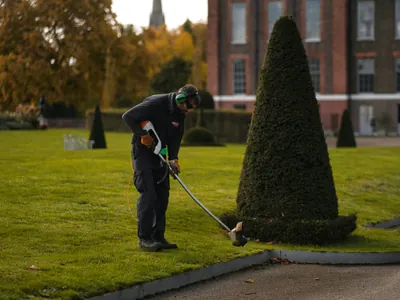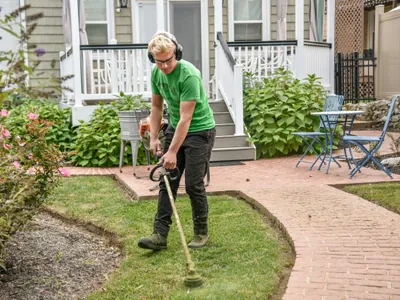Lawn Aeration: Improving Soil Health

Is your lawn looking thin, stressed, or developing thatch? The problem might not be what's on top, but what's underneath. Over time, soil becomes compacted from foot traffic, mowing, and even rain. Lawn aeration is the process of creating small holes in the soil to alleviate this compaction, allowing vital air, water, and nutrients to reach the grassroots.
🏆 Why Aeration is Essential for a Healthy Lawn
Aeration provides a host of benefits that lead to thicker, greener turf.
Relieves Soil Compaction
This is the primary benefit. Loosening the soil allows grassroots to grow deeper and stronger.
Improves Air and Water Flow
Allows oxygen and water to penetrate deeper into the root zone, reducing water runoff and puddling.
Enhances Nutrient Uptake
Helps fertilizer and other nutrients get down to the roots where they are needed most.
Reduces Thatch
The soil cores left on the lawn help to break down the layer of dead grass (thatch) that can choke your turf.
🔧 Types of Aerators
There are two main types of aeration tools.
📅 When and How to Aerate
Timing is key for the best results.
Aerate during your grass type's peak growing season. For cool-season grasses (like fescue) in Tennessee, this is in the early fall. For warm-season grasses (like Bermuda), it's in the late spring or early summer.
Aeration Best Practices:
- Mow the lawn first and water it thoroughly a day or two before aerating to soften the soil.
- Make several passes over high-traffic, heavily compacted areas.
- Leave the soil plugs on the lawn. They will break down in a couple of weeks and return nutrients to the soil.
- This is the absolute best time to overseed and fertilize your lawn, as the seed and nutrients have direct access to the soil.
Lawn aeration is a cornerstone of a comprehensive lawn care program. For professional core aeration services that will have your lawn breathing easier, contact The Box Advantage Group's groundskeeping team today.

